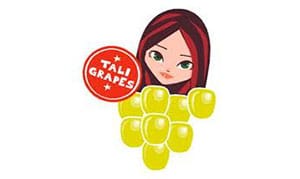The Importance of Fruit Quality Control & Testing for Oranges
Citrus oranges grow in tropical or subtropical climates. Native to both China and India, they now also grow in LATAM, the United States, and all over the world.
Ensuring orange testing is efficient, consistent and streamlined has become an essential task for anyone across the value chain in the fresh produce industry – from growers and pickers, to warehouses, marketing companies, wholesalers, online marketplaces, retailers, and consumers. By looking at efficiencies and automation opportunities in the method we use to harvest and manage orange yields, we are reducing waste, and improving productivity, profit, and control.
If you’re wondering how to choose oranges with smart orange testing – you’re in the right place. Clarifruit’s automated AI-driven platform makes it simple.
Common Defects to Look for in Orange Quality Evaluation
The following orange defects are the ones that are most likely to affect orange quality across the supply chain:
Sunburn
Sun scorch and sunburn can happen on citrus orange fruit when they have been exposed directly to very bright sun during late spring, summer and early fall.
Silver Scarring
A silvering on citrus orange fruit is usually caused by thrips. These can be superficial light or dark, and are non-progressive.
Torn Stem Ends
This can occur when you pick the fruit without clippers, and mishandle it by hand. If the fruit isn’t disinfected in a timely manner, this can cause rotting of the fruit, reducing the orange standard.
Sooty Mold
Sooty mold fungi when orange testing results from honeydew secretion from insects including aphids, mealybugs or scale. This black mold doesn’t usually appear under dry, desert conditions.
Spray Damage
Spray burn in oranges can damage the rind, so it’s important to be careful what kinds of nutritional additives or pesticides you use on your citrus oranges. Some post-harvest treatments can also cause ring patterns at the points where the citrus touches in containers.
Pitting
This type of peel injury in oranges is often triggered by high temperature storage, and is characterized by clusters of collapsed oil glands scattered over the surface of the fruit.
Oil Damage
When damage occurs to the cells, oil can seep out. Also known as Oleocellosis, the color of the orange may change from light to dark within a few days of packing. While this may be difficult to see with the human eye at first, it is a progressive defect that could damage a whole shipment.
Frost Damage
If your orange crop is subjected to low or freezing temperatures for a long period of time, it may cause freezing damage. The impact on the orange quality standard will depend on the tree’s previous irrigation, the health and age of the tree, and whether the location is exposed. Often you won’t see the freezing damage with the human eye, as it’s internal.
Shrivelling/Wrinkles
Wrinkles can be caused by many issues with an orange yield, including sour rot, insect damage, or poor irrigation.
Melanose
This defect is characterized by scattered corky raised pustules which are dark brown to black in color. When infection by the Diaporthe fungus happens, these pustules are produced by the rind. These do not lead to decay.
Green Mold
In orange testing, you may spot green mold, which can happen in many types of fresh fruit. The initial decay will likely appear with a soft watery spot that is more firm than comparable stages of sour rot. Millions of olive green spores are created, that are then easily dispersed during handling, and therefore the decay can spread from infected to healthy fruit in containers.
Rust Mite Damage
If you see smooth rust-brown blemishes when orange testing, this may be the result of rust mites. It often displays in a tear stain pattern, too. A rust mite will feed on any exposed surface of a fruit that is at least 1.3cm.
Greasy Spot
Mycosphaerella citri infects fruit through the stomates, which will cause the rind to darken, but do not cause a noticeable blemish. However, the rind may retain some additional chlorophyll, which could cause it to have a green tinge.
Thrips/Cicada Damage
Damage by thrips in particular has a very unique characterization. You will see a brown ring of either smooth or rough russeted skin. Growers can wrap young trees with gauze netting to protect from cicadas and other pests.
Interesting Facts about Oranges
- Newly planted orange trees need watering regularly, every 3-7 days at first.
- Oranges can be ripe internally without turning the color orange! The color is mainly due to the temperature. Washington navel oranges are usually ripe between January and May, while Valencias ripen between May and October for example.
- Orange trees can grow to a height of between 22 and 30 feet, and are the most widely grown citrus fruit in the world.
- Orange trees can produce more than 60,000 sweet-smelling blossoms, but only about 1 percent of a tree's blossoms go on to produce fruit.
Common Quality Attributes for Growing and Harvesting Oranges
The following internal and external orange attributes are commonly used for quality evaluation:
Color
Diameter
Sugar/Acid Ratio
Shape
Texture
For the full list of attributes that the Clarifruit platform currently evaluates and recommended quality standards for each, download our free app now.
The Clarifruit platform also integrates with 3rd-party technology to evaluate external tomato attributes. Learn more here.














